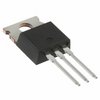-
The maximum junction temperature (Tj) for the STP80NS04ZB is 150°C, as specified in the datasheet. However, it's recommended to operate the device within a safe temperature range (typically 125°C or lower) to ensure reliability and prevent thermal runaway.
-
To calculate the power dissipation (PD) for the STP80NS04ZB, you need to consider the voltage drop across the device, the current flowing through it, and the thermal resistance (RthJA). The formula is: PD = (Vds * Ids) + (RthJA * Tj). You can find the values for Vds, Ids, and RthJA in the datasheet.
-
For optimal thermal performance, it's recommended to use a multi-layer PCB with a solid ground plane, and to place the device on a thermal pad with a large copper area. Additionally, ensure good airflow around the device, and consider using a heat sink or thermal interface material (TIM) if necessary. Refer to the STMicroelectronics application note AN1156 for more detailed guidelines.
-
Yes, the STP80NS04ZB is suitable for high-frequency switching applications up to 100 kHz. However, you need to consider the device's switching characteristics, such as the rise and fall times, and ensure that the PCB layout and component selection are optimized for high-frequency operation.
-
To protect the STP80NS04ZB from overvoltage and overcurrent conditions, you can use a combination of voltage regulators, TVS diodes, and current sense resistors. Additionally, consider implementing overvoltage protection (OVP) and overcurrent protection (OCP) circuits, as well as thermal monitoring and shutdown mechanisms.
 STP80NS04ZB datasheet
by STMicroelectronics
STP80NS04ZB datasheet
by STMicroelectronics
 STP80NS04ZB datasheet
by STMicroelectronics
STP80NS04ZB datasheet
by STMicroelectronics